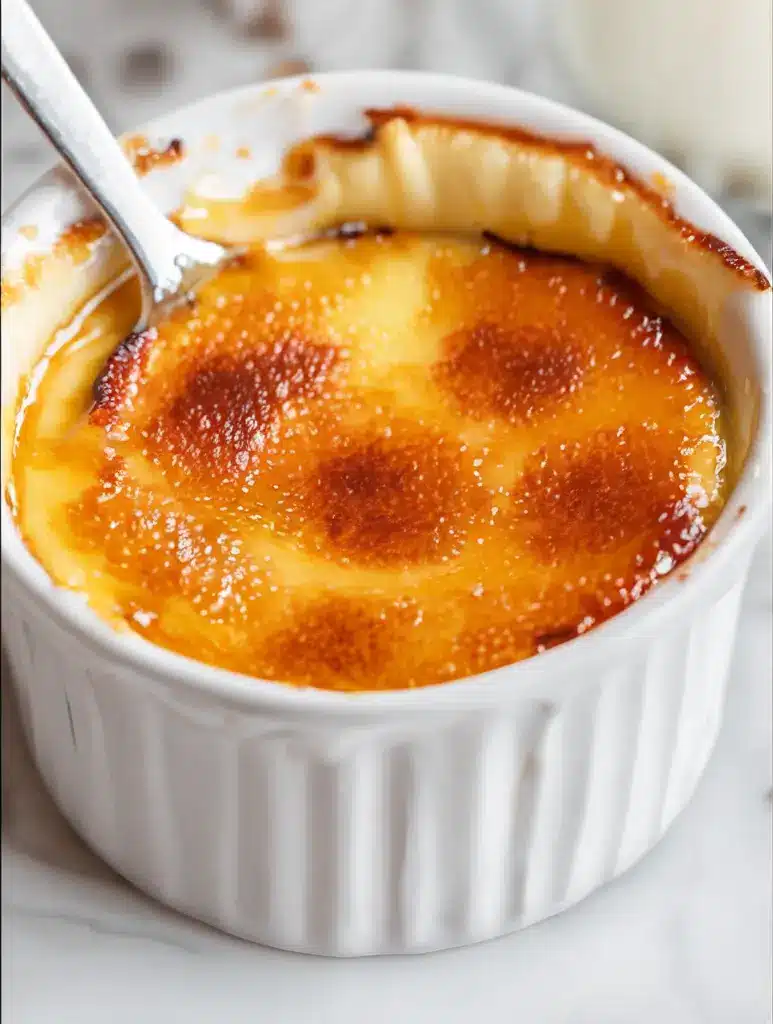
Crème brûlée, known for its creamy custard base topped with caramelized sugar, can initially seem daunting. However, with the right tools and techniques, achieving perfection becomes attainable. Moreover, this guide will walk you through the necessary steps to master the dessert’s signature finish. Additionally, for professional caramelization techniques, the Food Network’s guide is an excellent resource. Therefore, understanding the balance needed for a perfectly caramelized top is crucial. Firstly, choose the right sugar; fine granulated sugar melts uniformly. Secondly, apply the sugar evenly to prevent uneven caramelization. Lastly, control the heat with a culinary torch or broiler to manage the temperature precisely.
For tips on professional caramelization techniques, you can also check out this caramelization guide by Food Network.
The Science Behind Caramelizing Sugar on Crème Brûlée
A perfectly caramelized top depends on balance: a thin layer of sugar that melts evenly and hardens into a crunchy crust without burning. To get it right, understanding the process is essential:
- Choose the right sugar: Fine granulated sugar works best since it melts uniformly.
- Apply sugar evenly: A smooth, consistent layer prevents uneven caramelization.
- Control the heat: A culinary torch or broiler ensures precise temperature management.
If you’re curious about the basic components of this dessert, this guide to crème brûlée ingredients will help you understand its foundation. For a scientific take on sugar caramelization, visit Science of Cooking’s caramel guide.
Tools You’ll Need for a Caramelized Sugar Crust
To achieve a restaurant-quality finish, you’ll need some essential tools:
- Culinary torch: Provides precise control for caramelizing sugar.
- Fine-mesh sieve: Helps apply a smooth and even sugar layer.
- Heatproof ramekins: Securely hold the custard under high heat.
Additionally, exploring how this dessert compares to others can deepen your knowledge. This article on crème brûlée and custard highlights what sets it apart in terms of texture and preparation.
For guidance on choosing the right culinary tools, check out Serious Eats’ torch guide.
Step-by-Step Guide to Caramelizing Sugar on Crème Brûlée
Now that you know the tools and science, let’s move to the process of creating that irresistible caramelized crust:
- Prepare the Custard Base
- Start with a chilled custard. Keeping the base cold ensures the sugar melts without affecting the creamy texture beneath.
- Sprinkle the Sugar Layer
- Evenly distribute a thin layer of fine sugar over the surface. Tilt the ramekin to ensure uniform coverage, tapping off any excess.
- Caramelize the Sugar
- Hold your torch 4-6 inches from the surface. Move the flame in a circular motion, heating the sugar until it melts and turns golden brown.
- Let It Cool
- Allow the caramelized layer to harden for a minute before serving. This ensures the iconic crack when tapped with a spoon.
For those interested in enhancing the flavor, subtle additions like vanilla or citrus zest can elevate the experience. Learn more from this guide to flavor and texture.
Tips for the Best Results
To achieve a professional finish every time, keep these tips in mind:
- Sift sugar first: This helps ensure a smooth layer without clumps.
- Avoid burning spots: Move the torch steadily to prevent overheating any single area.
- Check the crunch: Tap the top lightly to confirm it has set properly.
By paying attention to these small details, your dessert can look and taste like it came from a gourmet kitchen. For troubleshooting caramelization issues, refer to Bon Appétit’s crème brûlée troubleshooting tips.
Common Mistakes and How to Avoid Them
While the process is simple, mistakes can still occur. To ensure a flawless top:
- Don’t overtorch the sugar: Keep the flame moving to avoid burning.
- Avoid uneven layers: Ensure the sugar is spread uniformly.
- Use the right amount of sugar: A thick layer can result in a hard crust.
By addressing these issues, you’ll be able to create a caramelized top that’s both visually stunning and delicious.
Conclusion
Perfecting the sugar crust on crème brûlée is a rewarding skill that elevates this classic dessert. With the right tools, proper techniques, and an understanding of potential pitfalls, you can consistently achieve a golden, crunchy top that cracks beautifully under the spoon.
For more inspiration and tips on mastering desserts, explore RecipeVia’s homepage. With practice, this show-stopping dessert can become a highlight of your culinary repertoire! And if you’re interested in pairing crème brûlée with other elegant desserts, check out Taste of Home’s dessert ideas.
